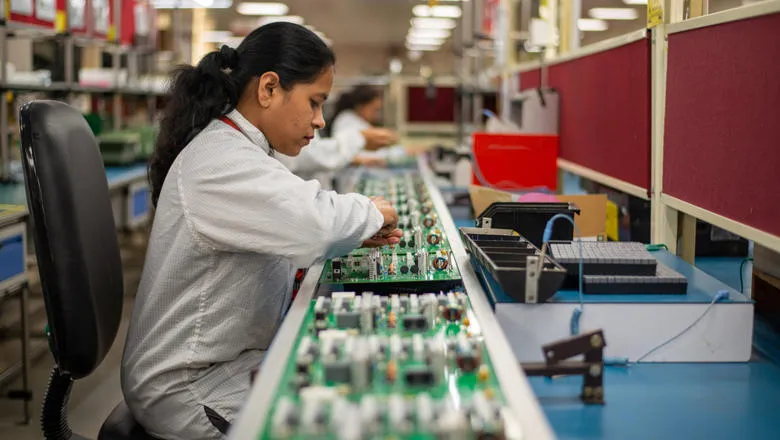This regime [in NCR] differs from the Chinese case as it is ‘devolved’ to landlords without formal connection to the factory, yet workers are subject to stringent controls in their living spaces, creating a mutually-reinforcing system of labour discipline.
30 May 2023
New study compares workplace-residence systems in China and India as a form of migrant labour control
Research explores the strategies employed in China and India for controlling migrant labour through workplace-residence systems.

The study, conducted by Drs. Charlotte Goodburn and Soumya Mishra from King's College London, compares the 'dormitory labour regime' in China with two examples from India, the migrant colonies system in the garment sector in North India and the factory hostel system in the electronics manufacturing sector in South India.
The researchers draw on original fieldwork in these two sites to argue that despite historical and contextual variations, India’s workplace-residence regime enables a form of migrant-dependent capitalism akin to that in China, in which firms rely on a continual supply of fresh, temporary, low-paid labour.
The origins of the dormitory labour regime and the use of rural female workers in China can be traced back to the 1920s when urban textile industries employed dormitories for this purpose. After 1949, these residential arrangements were replaced by the work unit (danwei) system, which provided long-term accommodation for urban workers and their families. However, with the decline of the danwei in the 1980s and the introduction of contract labour, the dormitory system resurfaced on a larger scale, first within the new Special Economic Zones and then beyond.
In India, the garment manufacturing clusters in the Delhi National Capital Region (NCR) recruit predominantly male workers, including many former farm labourers or subsistence producers from across north-central India. These migrant workers are housed in low-quality private colonies built by locals in surrounding urban villages. Unlike the Chinese dormitory labour regime, accommodation is not provided by firms, but - since their livelihoods depend on continued investment in manufacturing in the area - colony landlords work in synergy with employers to prevent unionisation of workers and evict those seen as troublemakers.
The case of electronics manufacturing in South India sheds light on a different workplace-residence regime, reliant on young female migrant workers. Recruited directly from impoverished villages in the north part of the state, these young women are bussed to the factories and provided with accommodation in private hostels contracted by the firms, with rent deducted directly from their salaries. In order to guarantee their “safety” (both physical and moral), and thus ensure rural families continue to approve their daughters’ migration, they are subject to extensive restrictions on their movements by hostel wardens, as well as monitoring and reporting to their employers' HR departments and left-behind families.
Not only do hostels report to employers, they also report to women’s parents – for example, to confirm arrangements for leave before allowing ‘inmates’ to depart – thus reinforcing the twin controls of factory and patriarchal family.
The research thus highlights the critical role of housing in migrant labour management and the politics of production in both Indian and Chinese systems. Although the two Indian cases employ different patterns of worker accommodation, they reveal contextually embedded workplace-residence regimes that parallel China's dormitory labour regime, serving similar purposes. In all cases, the workplace-residence regime facilitates employment of large numbers of low-paid temporary migrants, separated from local networks and any form of labour organisation.
Furthermore, the study challenges the notion that the 'dormitory labour regime' is unique to 1990s-2000s China. It suggests instead that we must shift our focus from the country and space-specific role of dormitories to a broader understanding of workplace-residence systems. The researchers emphasise the need for further investigation into the emergence of similar regimes worldwide, while taking into account local and international labour dynamics, as well as historical, social, cultural, and economic factors.
Read the full article published in Work, Employment and Society.


